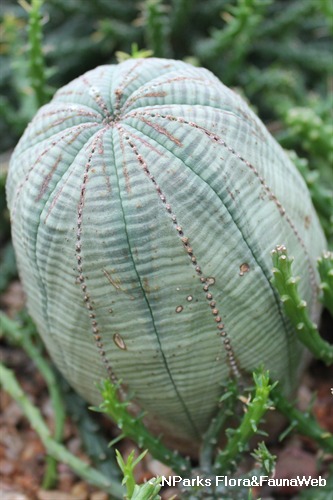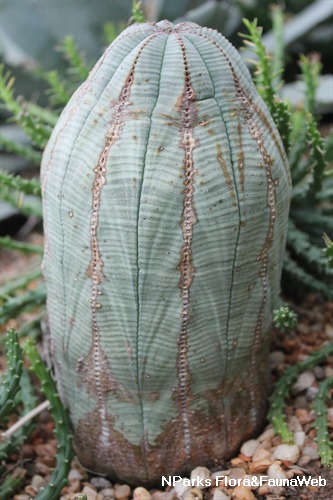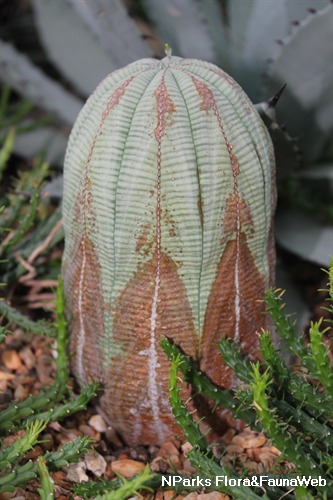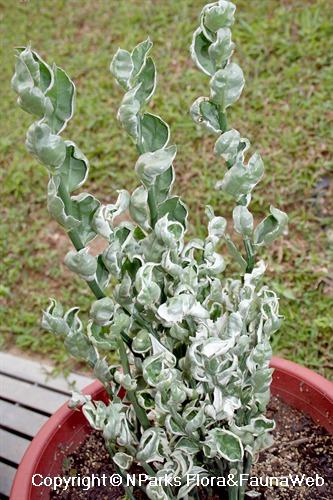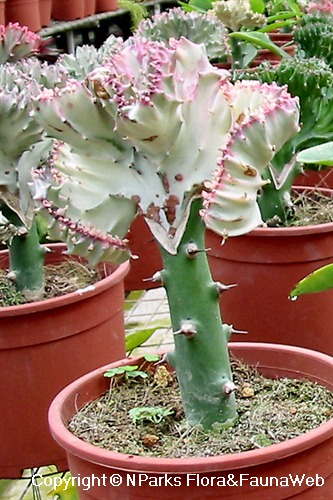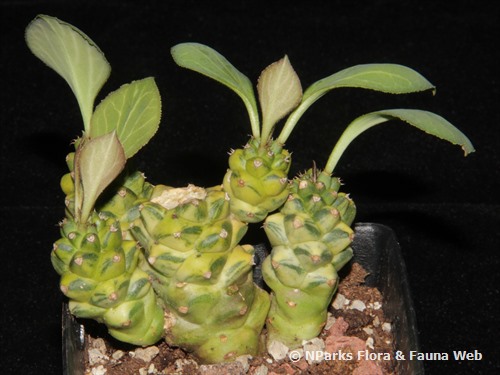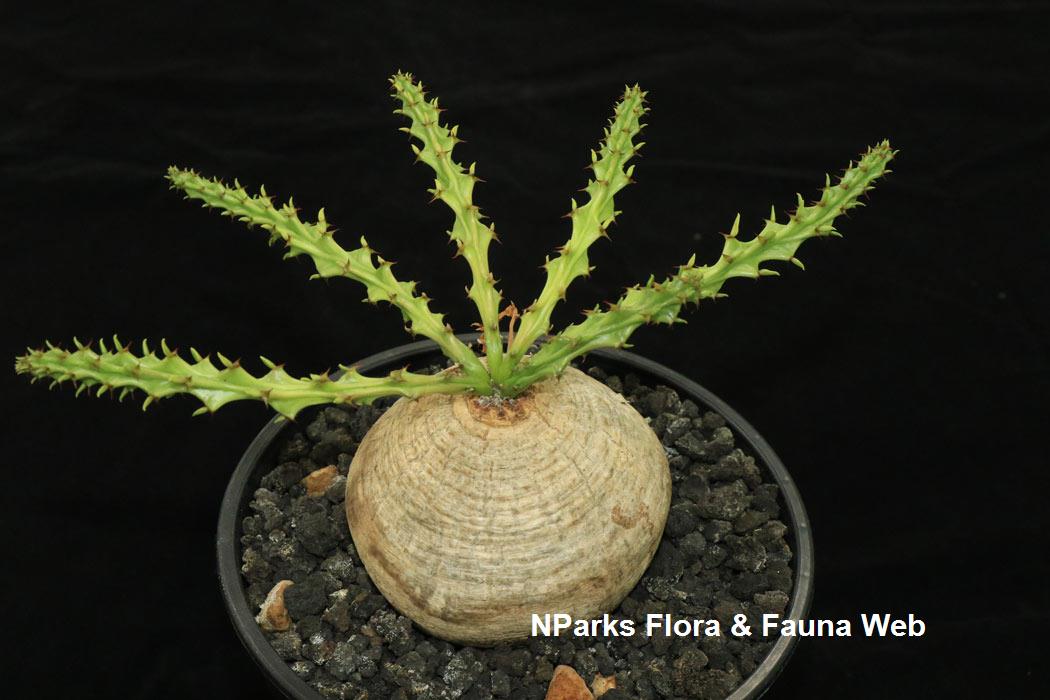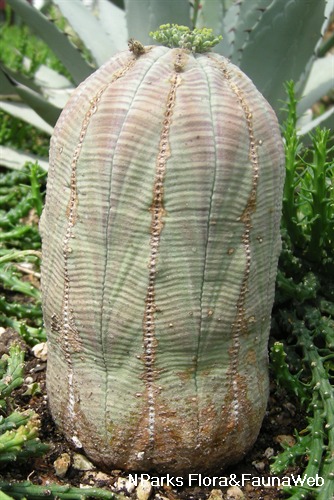
Name
Classifications and Characteristics
| Plant Division | Angiosperms (Flowering Seed Plants) (Monocotyledon) |
|---|---|
| Plant Growth Form | Shrub |
| Lifespan (in Singapore) | Perennial |
| Mode of Nutrition | Autotrophic |
| Plant Shape | Rounded, Columnar |
| Maximum Height | 0.2 m |
Biogeography
| Native Distribution | South Africa |
|---|---|
| Native Habitat | Terrestrial (Desert / Semi-Desert) |
| Preferred Climate Zone | Desert / Arid |
| Local Conservation Status | Non-native (Horticultural / Cultivated Only) |
| CITES Protection | True |
Description and Ethnobotany
| Growth Form | Spineless succulent with a round to barrel-shaped form. |
|---|---|
| Foliage | Tiny, rudimentary leaves are produced but quickly drop off. |
| Stems | Greyish green stem is initially globose up to about 7 cm in width. Then, the plant begins to elongate, forming a barrel-like shape up to 20 cm tall (occasionally up to 30 cm tall) and 9-10 cm wide. The stem has a rough, grooved texture with light purple tints or streaks. |
| Flowers | Male and female flowers are produced on separate plants. The flowers are small and form at the tip of the stem. Female flowers have a 3-pronged stigma, while male flowers have yellow stamens. The inflorescence is known as a cyathium. The female cyathium is composed of 1 female flower, while the male cyathium is made up of several, reduced male flowers. |
| Fruit | The fruit is a 3-angled capsule (up to 7 mm wide). Round, grey seeds (2 mm wide) are released from the capsule by explosive dehiscence. |
Plant Care and Propagation
| Light Preference | Full Sun |
|---|---|
| Water Preference | Little Water |
| Propagation Method | Seed |
Fruit, Seed and Spore
| Fruit Classification | Simple Fruit |
|---|---|
| Fruit Type | Dehiscent Dry Fruit , Capsule |
| Mature Seed Colour(s) | Silver / Grey |
Image Repository
Others
| Master ID | 31505 |
|---|---|
| Species ID | 5902 |
| Flora Disclaimer | The information in this website has been compiled from reliable sources, such as reference works on medicinal plants. It is not a substitute for medical advice or treatment and NParks does not purport to provide any medical advice. Readers should always consult his/her physician before using or consuming a plant for medicinal purposes. |

